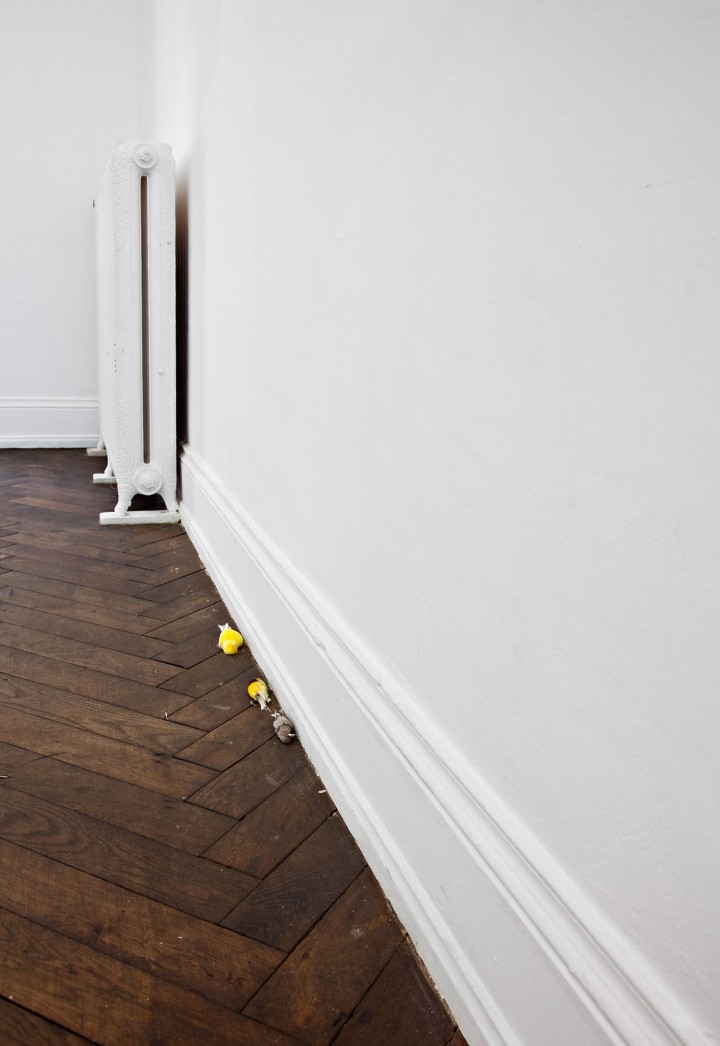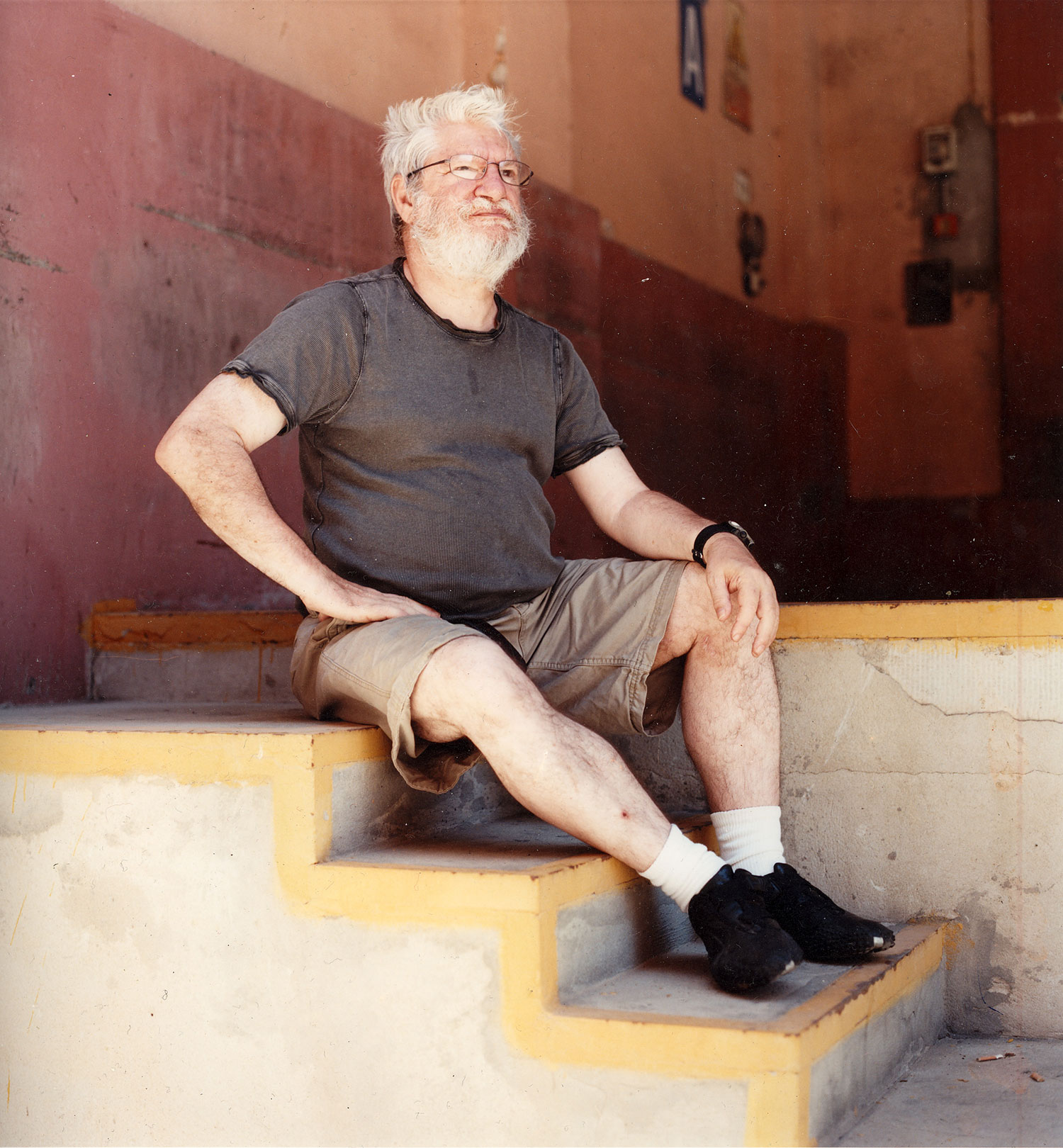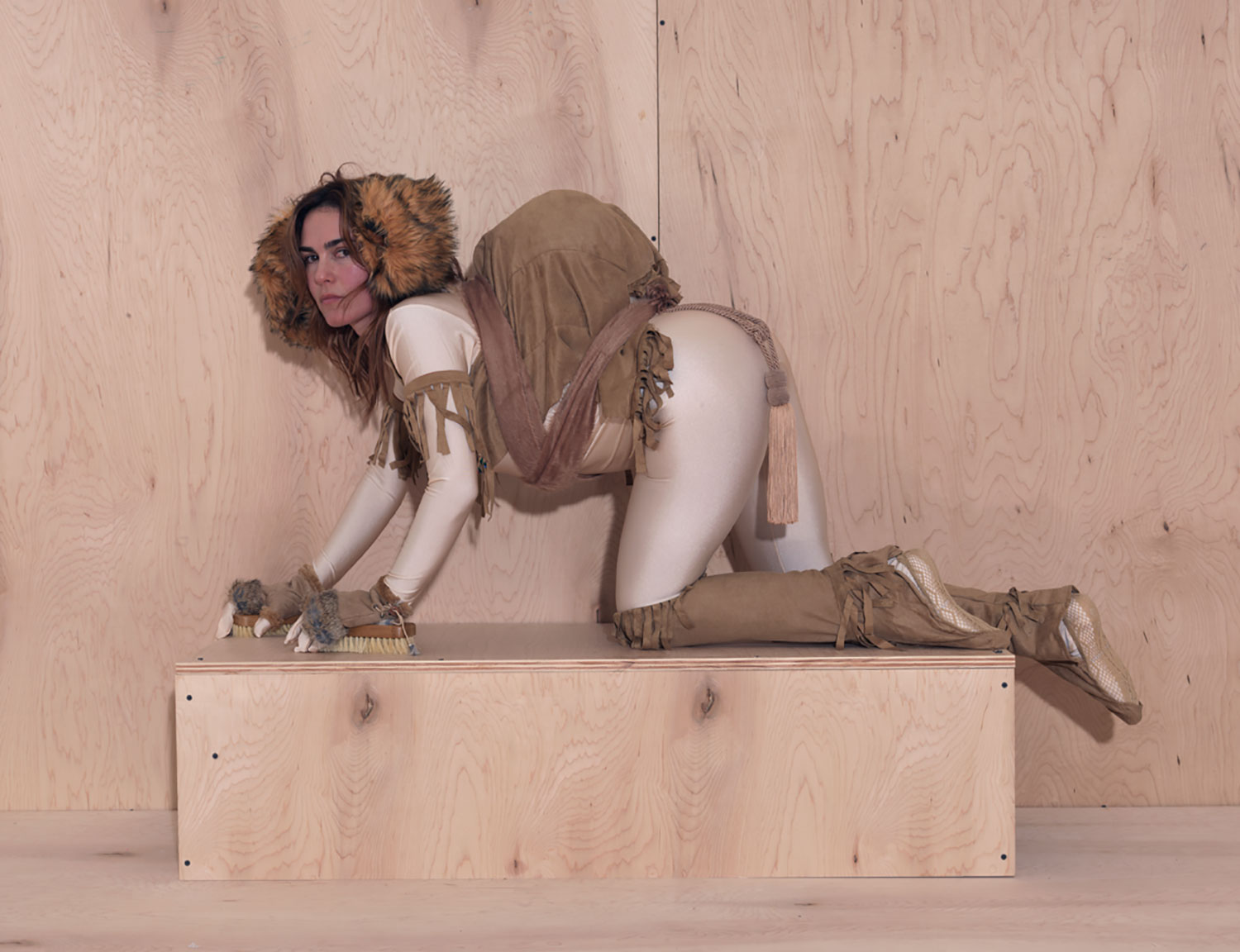
Andreas Schlaegel: Your works appear to communicate exceptionally well in images.
Vanessa Safavi: I suppose so, but it also has to do with scale. If you’re talking about the birds in Each Color is a Gift for You (2012), they have a strong presence that lends itself to photography. But the installation deals with absence — not really death, but non-life or inactivity. It speaks to our relation to exoticism, how we treat it as a fetish and consume it.
AS: As taxidermy specimens they seem to refer to the notion of the ruin as a form that exists for eternity — a form devoid of life.
VS: They are installed lying on their backs, the same way that biologists keep the pieces in drawers, as study material. Taxidermy is a form of preservation, but it is in fact very romantic. I didn’t want to make an apocalyptic scenario, even if the birds represent a sense of failed utopia. The first time I showed them was at CRAC Alsace for my exhibition “I Wish Blue Could Be Water”(2012). I proposed a utopian possibility and its own failure. It is a very old philosophic concept — that opposites exist and work together.
AS: But the birds were only one part of the exhibition. What else did it consist of?
VS: I showed them with two cast white silicone pieces on the wall, white monochromes. It was a very poetic juxtaposition, a dialogue — as if the color had vanished out of the paintings on the wall and had taken on the form of birds. I’m also fascinated by resins, plastics and gums.
AS: What are the qualities of resin that attract you?
VS: There is a deep relation to the unconscious in translucent materials. They have a potential for contemplation in the original sense of the word — of seeing something, admiring it and thinking about it. Silicone is like jelly, like a jellyfish, a deep-sea creature that creates light out of itself. It brings up things from Buddhism and psychology that are based on theories of the unconscious, things in the mind that we are not aware of.
AS: Is your mixed cultural origin important for your work?
VS: It’s where everything starts. With my Iranian origins and the impressions of the country, having grown up surrounded by that culture, it made it easy for me, for example, to travel in Asia. I was not taking a Western perspective, seeing things as exotic. I don’t like to categorize, or to be categorized. My work criticizes but also leaves things as they are. I try not to deconstruct too much or present too much reality. I’m a witness, a good witness.





